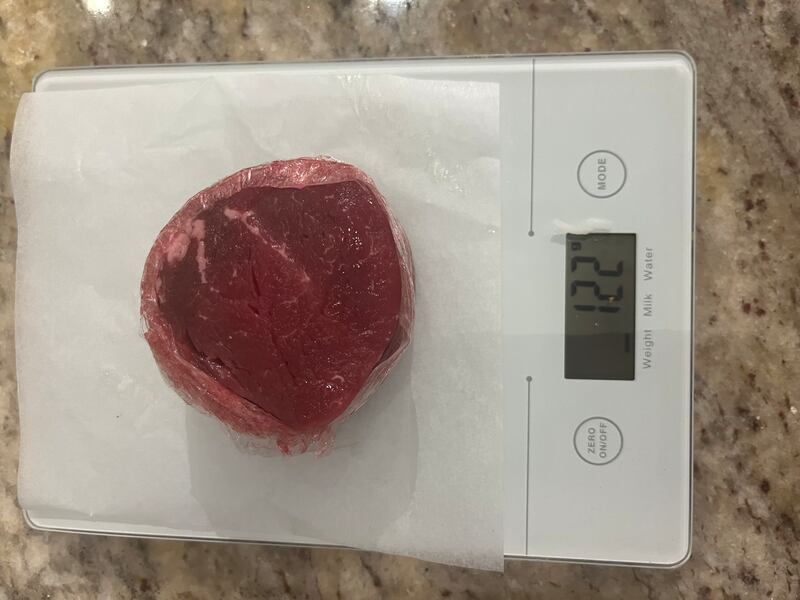Charlie McConalogue, Minister for Agriculture, Food and the Marine, has been on a crusade to tackle Ireland’s food waste problem, urging restaurants to serve smaller portions and decrying the use of “doggy bags” for customers to take home what they are unable to finish. In France and Spain, the official approach is the opposite – restaurants can be fined for not providing takeaway containers for diners who request them.
But the food waste problem isn’t confined to restaurants, indeed many restaurateurs and chefs would argue that it is not a problem for them: food is too expensive a commodity for them to waste and still make a profit. It is in our homes that the greatest amount of food is discarded – almost a third of Ireland’s food waste mountain of about 750,000 tonnes a year is generated by private households.
In my kitchen cupboard, there are large off-white plates and plain white bowls, large and small, that we eat dinner from every day. The bowls are what we reach for most often, their shape more suitable for the weekday pastas, stews, curries and bakes that we eat on rotation at this time of year. The plates come out when a knife is required rather than optional.
When I am watching what I eat, I reach for the smaller bowls, but more often than not I choose the larger ones, trying but not always succeeding, to keep the portion size the same. It is true that we eat with our eyes first, before we taste a morsel, and to me food just looks better if it is not crowded on to a plate or bowl.
RM Block
But plate sizes have gradually increased over the years, and with it our appetites. Many of us have got used to eating more than we need to, and more than is recommended by dietitians for a healthy lifestyle. Sarah Keogh, a dietitian and lecturer in culinary nutrition at Technical University Dublin (TUC), says the average dinner plate is substantially bigger in diameter than it was in the 1960s and 1970s. And if there is space on the plate, we are to going to be tempted to fill it, aren’t we?
“Average dinner plate sizes, if you go to buy one today, have gone from roughly an 8-inch diameter [20cm] to a 12-inch diameter [30cm] and beyond,” Keogh says. “And the problem is, if you go back even 25 years ago, it might have been an 8-inch plate, but there was a rim and you put the food within the rim, whereas there are a lot more rimless plates now, but the plate is still the same size, so people are inclined to fill the plate.”

The extra and often unnecessary calories on a large plate serving can mount up alarmingly. “There is up to an additional 600 calories on a plate, and dinner should be around 600 calories in total. Even breakfast bowls are twice the size that they would have been 20 years ago, so you’re having double the bowl of cornflakes that you did have.”
“I’ve seen this a lot in clinics with people who are trying to lose weight,” says Keogh, who is the founder of Eatwell, a nutrition and dietetics consultancy, as well as having a private practice in Dublin. The mantra I get from so many people is, ‘I eat healthy food, I don’t know why I am putting on weight’. And I say, well let’s look at the size of your plate. There are many things involved in weight, but one of them is the total amount of calories you consume in a day. And whether it comes from healthy food or less healthy food doesn’t matter in terms of weight.”
Plate size apart, I am making a fundamental error in eating my dinner from a bowl, according to Keogh. “My advice is never eat your dinner out of a bowl, unless it’s soup, because you can pack up the sides of that bowl really quite high. A bowl is always a mistake, even for pasta. I’d never serve pasta in a bowl, always a plate.”
Putting Keogh’s advice to the test, I weigh and measure my dinner and present it on a plate, and in a bowl, keeping to the Health Service Executive (HSE) published recommended portion sizes. The one cup (200ml) of cooked basmati rice, along with 100g of lemon and coconut dal, looks reasonably generous on my 28cm plate (which actually dates from around 30 years ago), but in the bowl – how I would normally serve it – it looks like a child’s portion in comparison. I also have a plate of steamed broccoli on the side, and dinner at these quantities leaves me no longer hungry, but not full either, which is ideal, according to Keogh.

“What is interesting is your perception around what was in the bowl and what was on the plate,” Keogh says. “There is some really good research in this area. For example, if you have a tall slim glass, you will drink less than if you have a short, fat glass and if you have the same amount of liquid, you’ll feel like you had less in the short glass than in the tall glass. At the end of the day, we just don’t need the giant plates.”
Bigger plates and larger portion sizes are not just confined to home, where we are in charge of what is served. Keogh believes portion sizes have increased across the board in recent years. “If you look at the size of doughnuts and cupcakes and pastries in the last 20 years, they’re nearly three times the size. When I was little and you got a fairy cake, it was about the size of the fist of a two-year-old. Whereas today, you’re getting a cupcake and it’s just huge. We see that growth in portion sizes everywhere.”
However, McConalogue’s suggestion that portion sizes in restaurants are far too large, and are contributing to unnecessary food waste, is contested by some restaurateurs and chefs.
Will Beckett is co-founder and chief executive of Hawksmoor, the steakhouse chain, with restaurants in the UK, the US and Dublin. “I think restaurants have done a great job in working on food waste over the years. Last year we set targets for water and waste reduction using three years of baseline data to ensure greater accuracy and dedicated action, and all our food waste is turned into biogas. If anything, I read more in the press about smaller portions (shrinkflation) rather than larger. It’s part of the art of restaurants, isn’t it – getting portion sizes right is about value for money for customers. In my experience all restaurants hate waste, even if they’re not sustainability-focused, because it impacts their profits,” he says.
Wade Murphy, a chef who owns and runs 1826 Adare in the Co Limerick town with his wife Elaine, agrees. “Portion control and costing everything within an inch of its life are vital in order for a restaurant to survive. When we first opened, we served potatoes as a side dish with every main course ordered as we thought that’s what people expected. When we saw how much we were throwing out, we decided to look at it. It costs money to bring them in, cook them and then dispose of them and it didn’t make sense. Now each plate is garnished with a potato or a starch and if people want additional sides, they can order them.”
Grainne O’Keefe, chef proprietor at Mae restaurant in Ballsbridge, also believes restaurant portion sizes have not increased in recent years. “In a fine dining restaurant with a set menu, you are likely to get smaller portions of food than in a gastropub, but you get a lot more courses, which overall would likely amount to the same amount of food. It is important that people don’t leave a meal feeling hungry regardless of what type of establishment they are dining in, but I don’t think that portion sizes have had to increase to accommodate that.”

Gareth Mullins, executive head chef at Anantara The Marker hotel in Dublin 2, says that guests asking to take away unfinished food happens rarely in his Forbes Street restaurant, with the occasional exception of very large steaks. “If someone orders a sharing steak like a T-bone or Tomahawk and doesn’t finish it, they might ask to bring it home, which of course is not a problem.”
Conversely, smaller portions of steak are proving popular at his restaurant. “I recently added a 6oz (170g) fillet steak to my à la carte menu as well as an 8oz (227g), and I am surprised at how well the 6oz is selling and shows some guests are happier with a smaller cut of meat.”
[ How an enthusiastic group of chefs are reducing food waste in their kitchensOpens in new window ]
[ Angela Ruttledge: Here’s why I rarely order anything for myself in restaurantsOpens in new window ]
Even a 170g/6oz steak is still way beyond the 50-75g lean protein recommended serving size in the HSE guidelines, something O’Keefe takes issue with. “I don’t think that is realistic. If a restaurant was to serve even 75g of protein, people would complain.” However, even with larger portions, and four courses on her set menu dinner, food waste is not something she encounters in her restaurant. “Very rarely we have guests asking to bring leftovers home, as there is never really much left, with the exception of a dessert that they may want to finish later.”
At Hawksmoor, the average ordered weight of steak per diner “is probably circa 300g,” according to Beckett, but not all of it always gets eaten on site. “We love doggy bags! Everyone should be able to ask for one, and we’ve had periods of actively pushing them, and putting recipes (like our steak sandwich) into the bag as well to give people a bit of inspiration. I suspect very few doggies actually end up eating them, but can confirm that in the Beckett household Blanca the blind great dane and Bruno the whippet have had quite a bit of leftover steak through the year.”





















